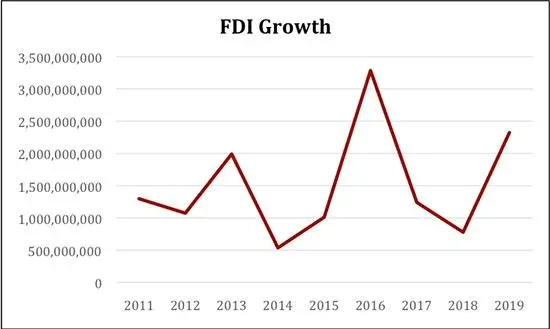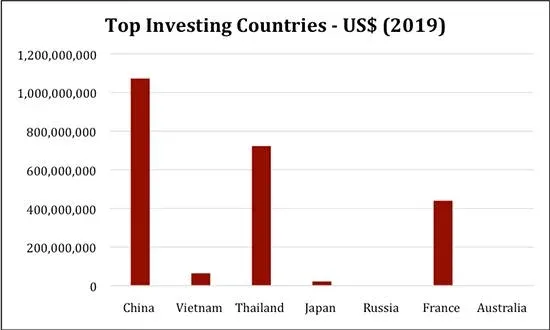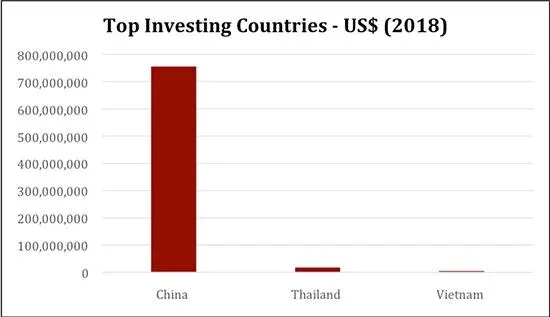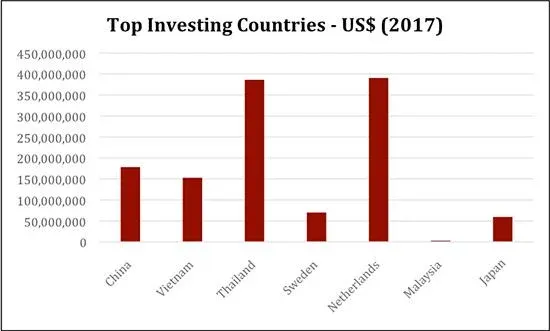Foreign direct investments in Laos stood at $208.1 million at the end of 2020, according to data provided by the Bank of the Lao PDR.
The following graph depicts the FDI growth of Laos, as per the data obtained from Ministry of Planning and Development. In 2019, the FDI stood at USD 2.3 billion growing by a massive 198% from the preceding year. The FDI has seen a 79% growth between the years 2011-2019. The FDI growth though hasn’t really been very stable having seen steep declines and rapid increases. The FDI reached its peak in the year 2016, at USD 3.2 billion.

As mentioned earlier due to its strategic location and diplomatic foreign policy, Laos enjoys a lot of FDI from its neighbouring countries. In the years 2019 and 2018, China accounted for a major chunk of the FDI at about 46% and 97% respectively. Vietnam and Thailand are the 2 other prominent countries which have continuously invested in Laos. In the year 2017, Netherlands accounted for majority of the FDI at about 31.4% followed by Thailand at 31.1%.



Throughout the course of the 3 years from 2017 to 2019 the standout sector in terms of the highest investment has been that of Electricity generation. In 2019, it accounted for 52% of the entire FDI, followed by Mining at 43%. The other prominent sectors are that of services, agriculture, trading, education and consultancies.
There are two types of economic zones in Laos, Special Economic Zones and Specific Economic Zones. Among the Special Economic Zones (SEZs) in the country there are two: the Savan-Seno Zone SEZ located in central Laos’ Savannakhet Province – a central point of the East-West Economic Corridor; and the Golden Triangle SEZ located in the sub-Mekong region close to the country’s borders with Myanmar, Thailand, and China. The rest of the economic regions are designated as Specific Economic Zones with most of them located near the capital city of Vientiane.
In order to set up a business in a special or specific economic zone companies need to apply for a license with the Secretariat to National Committee for Special Economic Zones. Investing in SEZ can be done in two ways: general investment and promotional investment. A general investment allows the developer or investor to invest in all sectors within the SEZ, except those forbidden by the government, such as trading of arms, drugs, poisonous chemicals, etc. Benefits of investing in these zones include tax exemptions for importing equipment and raw materials for infrastructure construction, and reductions in income tax and value added tax.